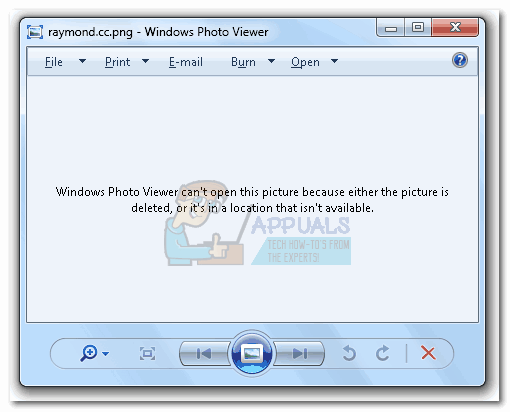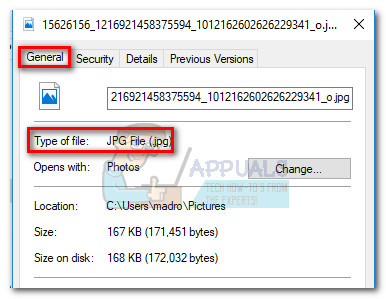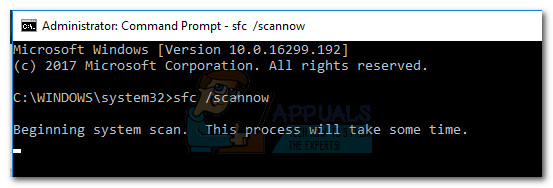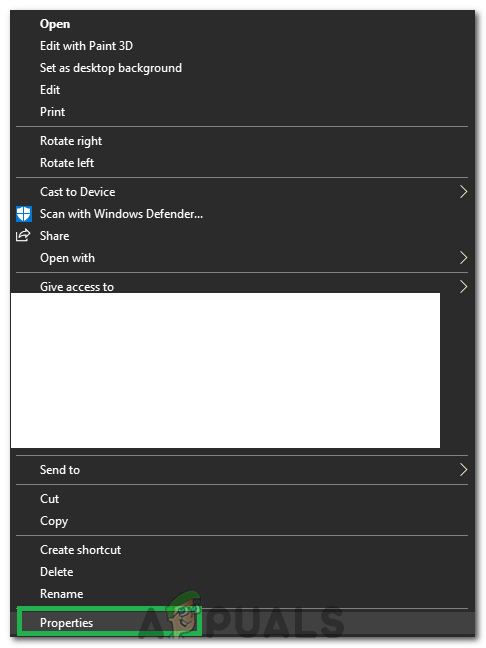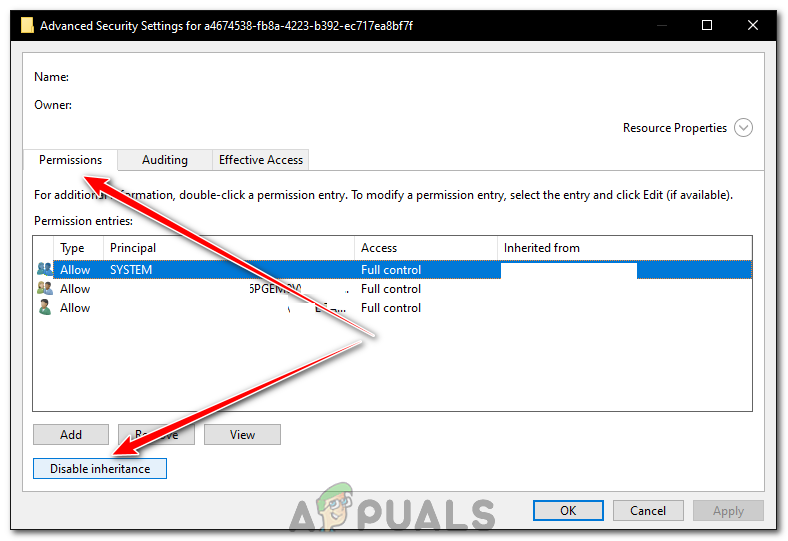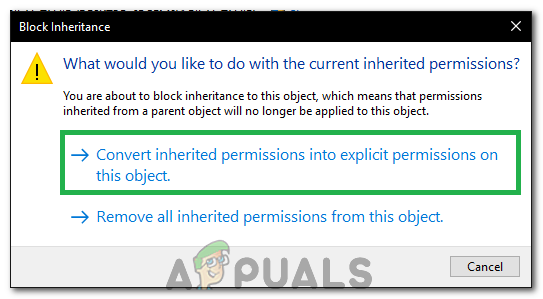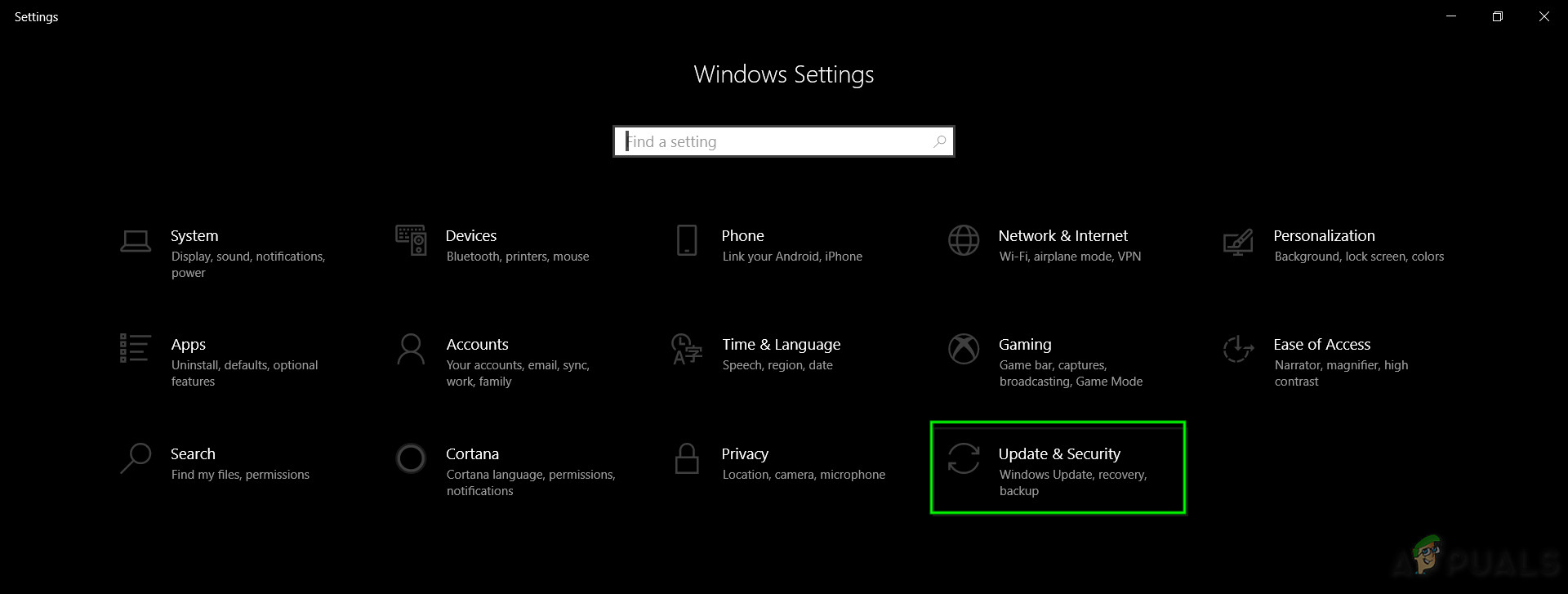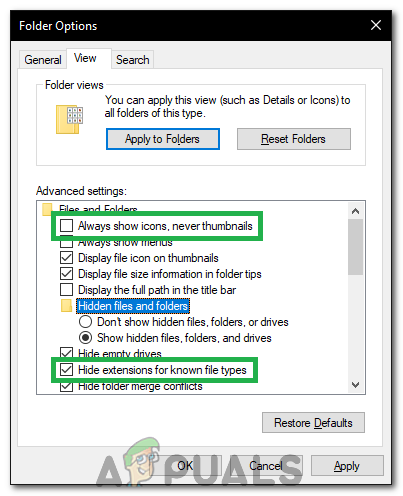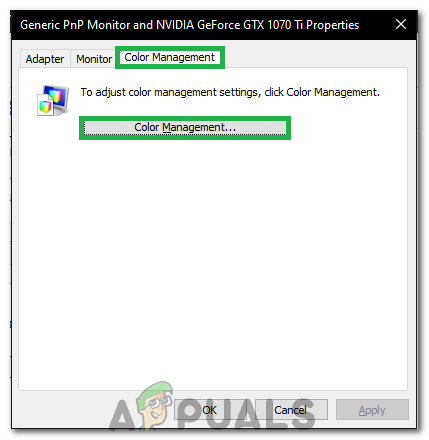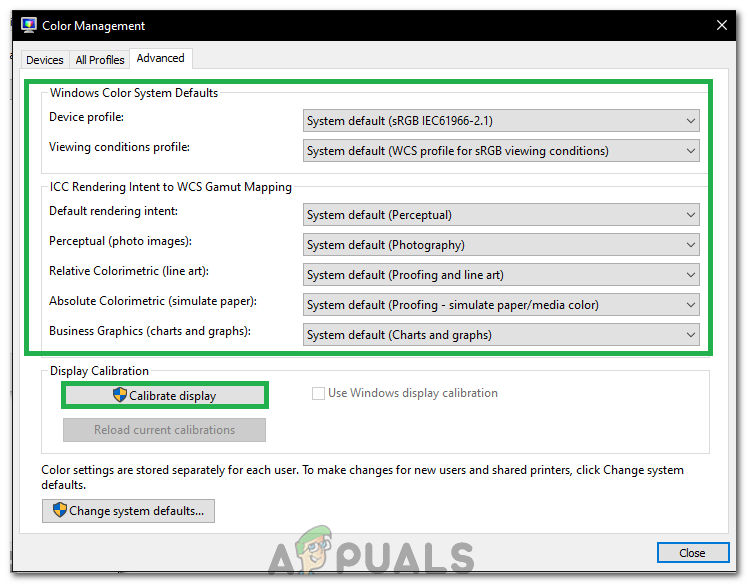This particular issue is mainly reported on Windows 7, Windows 8 and Windows 8.1. Windows 10 another default photo viewer. Windows 10 users can only encounter this issue if they previously modified the system settings to use WPV by default. We went ahead and did some investigations on this issue. Here are some of the most common scenarios that will trigger this issue:
Photo/Image is a file type that is not supported by Windows Photo Viewer.The photo/image file is corrupted.3rd party Android/iOS suite is causing conflicts with the default photo viewer.The file is encrypted.The operating system is dealing with corrupt system files.
If you’re having trouble with this particular issue, use the methods below to troubleshoot your problem. It’s highly recommended that you follow the fixes in order until you manage to solve the issue. In any case, start with Method 1 and eliminate the possibility of a corrupted or unsupported file.
Method 1: Check if the file is corrupted or unsupported
Before you troubleshoot for system corruption or software conflicts, it’s important to eliminate the possibility of a corrupted photo/image and make sure that the format is actually supported by Windows Photo Viewer. WPV is a pretty old piece of software, so it doesn’t support that many file types. First things first, check the extension of the file in question and see whether it’s actually supported by the software. Windows Photo Viewer can only open .jpg, .jpeg, .tif, .tiff, .png, .gif, .bmp, .dib, and .wdp file types. You can view the file type of the picture by right-clicking on the file and selecting Properties. Then, check the file type in the General tab next to Type of file.
If the extension of your file is not supported by WPV, you won’t be able to open it with this software. If that’s the case, turn to Method 5 for instructions on using a different photo viewer application. If you determined that the file type is supported by WPV, let’s see if the file is not corrupted. You can go about it in several different ways – either move the file to a different system and see if it opens there or send the picture to a friend and ask him to open it. You can also transfer it to an Android phone and open it via the default photo app (it supports more file types than WPV). Once you’ve made sure that the file is nor corrupted or unsupported, you can start troubleshooting with the methods below.
Method 2: Reinstall Android/iOS backup suite
Some users have started experiencing this problem immediately after updating their phone backup suite. They supposedly lost the ability to open images in Photo Viewer as soon as the update was applied. In their case, the solution was to uninstall the phone software and reinstall it again. As it turns out, a lot of those phone utility suites include a photo viewer that can cause compatibility problems with the default photo application. Here’s a quick guide to removing the program associated with your phone:
Method 3: Remove Encryption for this file
Windows has quite a history of displaying odd error messages when dealing with encrypted files. If the name of the file that you try to open is displayed in green letters (or the folder that’s containing it is), it means that the file is encrypted.
This typically happens when you’re trying to open photos fetched manually from a different OS (OS X, iOS, Android, Linux, etc). If the file is displayed in green letters, follow the steps below to remedy the issue and open it with Windows Photo Viewer:
Method 4: Run the System File Checker
If you burned through all the methods above and are still struggling with the same issue, there’s a strong possibility that you’re dealing with some corrupt system files. If that’s the case, doing a System File Checker scan will usually repair most instances of corruption that might be plaguing your system. Here’s a quick guide on how to initiate a System File Checker scan:
Method 5: Use a different photo viewer app
If the file is not supported by Windows Photo Viewer or the software has become unusable, you can easily use a different program to open the respective image file. Right-click on the file that’s causing problems and go to Open With, then select a different program from the list. Paint is a good choice since the list of supported file types is bigger than WPV’s.
Note: You can also go for more specialized software like IrfanView Graphic Viewer. This software is free and supports virtually any file type used for photos or images. There’s also a Windows 10 app for it available for download in Microsoft App Store. If Paint or another program manages to open the photo/image, right-click again > Open With and choose Change Default Program (Choose another app ). To make the change permanent, select the app that you want to use from now on, check the box next to Always use this app to open jpg files and hit Ok.
Method 6: Disable Inheritance
If you still want to use Windows Photo Viewer to be able to view photographs, you can try to disable the inheritance of the picture which will allow you to be able to view it in spite of any permission objections from its previous residence. In order to do that:
Method 7: Install Updates
In some cases, pending updates can also trigger this error because Windows’ features require to be updated from time to time to compensate for new file formats, new types of encryptions and to accommodate other issues. Therefore, in this step, we will be updating Windows to fix this issue. For that:
Method 8: Enabling Thumbnail Preview
There have been reports that this issue was being triggered because the Thumbnail Preview wasn’t enabled in settings. Therefore, we will be enabling that, in order to do so follow the steps below.
Method 9: Scanning USB Drive
If you are facing this issue on a specific USB drive, you can perform an SFC scan on it and check if that is causing the issue. In order to do that: Note: Also make sure that Windows Photo Viewer is selected as the default program for viewing photos. In addition to that, make sure that you check if the files run on another computer.
Method 10: Changing Colour Management Settings
In this step, we will be re-configuring the Colour Management settings, in which we will delete any associated profiles and change certain configurations to the system default. In order to do so, follow the steps below.
Solution 11: Registering Application
In some cases, the Windows Photo Viewer’s registry entries might be messed up due to which this issue can be created. Therefore, in this step, we will be registering the applications using a file. For that:
How to To Bring Back Photo Viewer in Windows 10How to Reduce the Size of a Photo or a PictureFix: YouTube Picture In Picture not WorkingHow To Use Picture in Picture on A Chromebook
